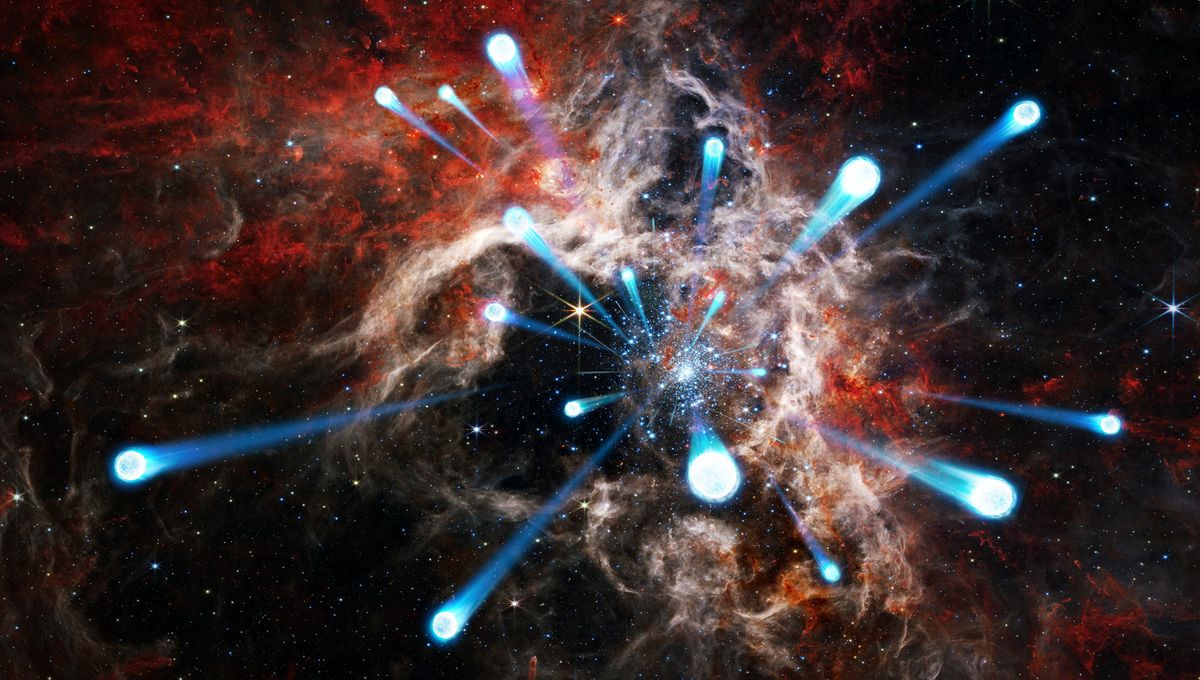
Sometimes where you are born is not where you are meant to be, especially if you are going to be brighter and hotter than anyone else there. Young star cluster R136 is a stellar nursery full of stars but over the last 2 million years it has sent dozens of massive stars flying into interstellar space across the Large Magellanic Cloud, a satellite galaxy of our own.
Using the European Space Agency’s Gaia telescope, researchers were able to measure the motions of many massive stars and by rewinding the clock using computer models, they could work out that they originated inside this specific cluster.
R136 has lost about one-third of its most massive stars. These objects were thrown out at a speed of 100,000 kilometers (61,000 miles) per hour. Massive stars go through their fuel quickly before eventually going supernova, leaving behind a neutron star or a black hole. Some of these objects traveled up to 1,000 light-years from the cluster before exploding. And that is not all: the team has found evidence that suggests the escape happened not once, but in two episodes.
“The first episode was 1.8 million years ago, when the cluster formed, and fits with the ejection of stars during the formation of the cluster. The second episode was only 200,000 years ago and had very different characteristics. For example, the runaway stars of this second episode move more slowly and are not shot away in random directions as in the first episode, but in a preferred direction,” lead author Mitchel Stoop, a graduate researcher at the University of Amsterdam, said in a statement.
“We think that the second episode of shooting away stars was due to the interaction of R136 with another nearby cluster (that was only discovered in 2012). The second episode may foretell that the two clusters will mix and merge in the near future,” added co-author Alex de Koter, also at the University of Amsterdam.
R136 is a famous cluster. It has hundreds of thousands of stars, including the most massive known stars, like BAT99-98, which are estimated to be up to 300 times the mass of the Sun. R136 is located in the equally famous Tarantula Nebula, a star-forming region that has no comparison in the Milky Way.
Losing one star might be a tragedy, losing 55 looks a lot like carelessness. The dynamic interactions that ejected some of them were present when the cluster was just forming. This work is giving important insights into how the birthplace of stars forms and evolves.
“R136 has only just formed (1.8 million years ago) and so the runaway stars could not yet be so far away that it becomes impossible to identify them. If you can find a lot of those stars, you can make reliable statistical statements. This worked out beyond expectations, and we are tremendously pleased with the results. Discovering something new is always a thrill for a scientist,” De Koter concluded.
A paper describing the results is published in the journal Nature.
Source Link: 55 High-Speed Runaway Stars Discovered Escaping From A Single Star Cluster